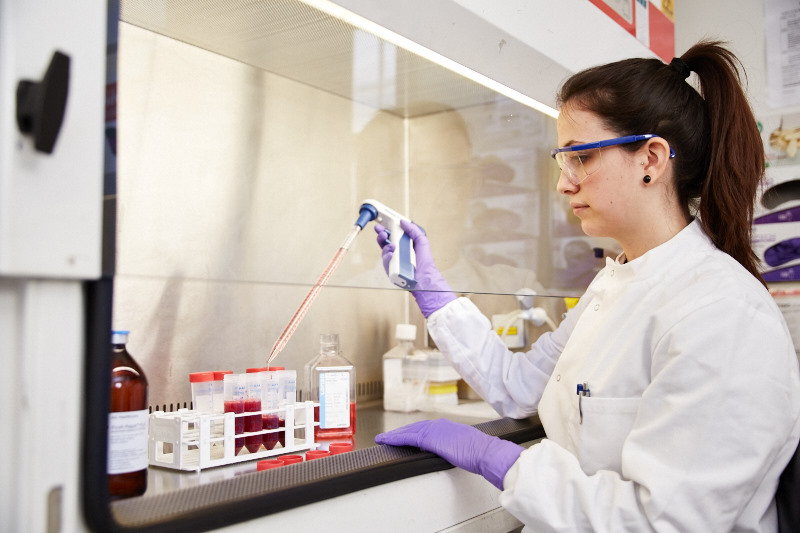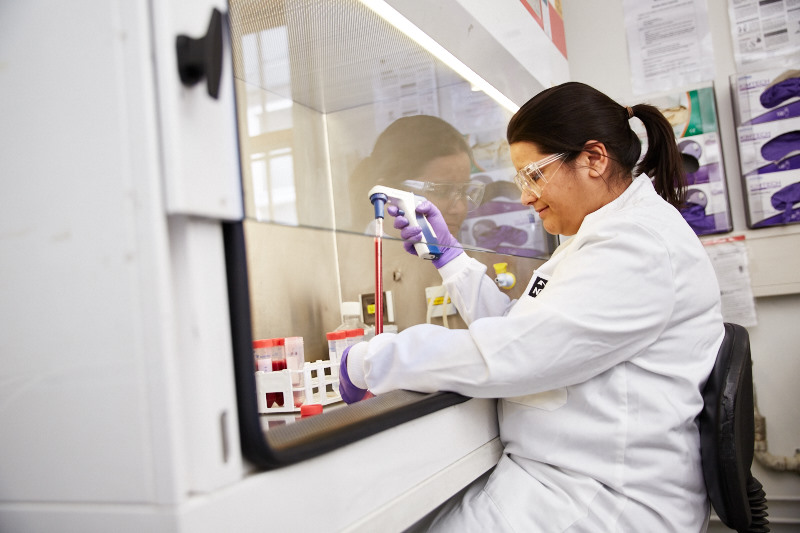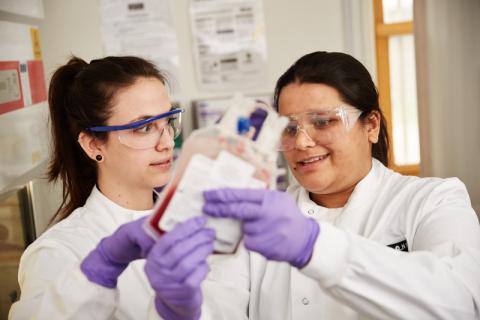With the help of our colleagues at Be The Match in the U.S., here’s the latest news from the world of stem cell transplant research.
Studies show donor transplants are the best treatment option for older people with AML
Acute myeloid leukaemia (AML) usually affects people aged 60 and over. Treatment with chemotherapy often leads to remission, but sadly, there remains a high chance that the AML will return. As a result, researchers are currently focusing their efforts on treatment options for those who are in remission.
In a recent project, a team of researchers pooled together the results of four large studies to investigate the best treatment options. A total of 1,150 people aged 60 and over, and in remission from AML, received either no treatment, chemotherapy, an autologous transplant (where the patient’s own stem cells are used) or an allogenic transplant (where cells from a donor are used).
The researchers found that allogenic transplants improved five-year survival rates, especially for those with a more aggressive illness, giving better results than the other treatment options.
Read more here.

New drug shows potential for treating GvHD
Researchers have demonstrated that a new drug could be effective in treating Graft versus Host Disease (GvHD) in people who’ve already tried a number of treatments.
The drug, known as Ruxolitinib, is used to treat people with a type of blood cancer called myelofibrosis. Studies in mice have shown it could also help treat GvHD by reducing inflammation, and calming down the immune response that leads to donor cells damaging healthy tissue.
This is the first study looking at whether Ruxolitinib can treat GvHD after a transplant in humans. The researchers collected information on 95 people with acute and chronic GvHD who had used the drug. All of them had tried previous treatments, including steroids, and had typically tried about three other therapies.
More than eight out of ten people had at least some improvement in their GvHD, and for some their symptoms were completely cleared.
This was a small, early study, so we’ll need larger studies comparing Ruxolitinib to other medications to understand how well it works in the long term, as well as any possible side effects. But the results are encouraging and pave the way for an exciting new area of research.
Read more here.

Age has no impact on effectiveness of haploidentical transplants, new study finds
A haploidentical transplant is where the donor and patient are related to each other, and the genes that are used to match the patient and donor are half-matched. Parents are always a half-match for their children and vice versa, and siblings have a one in two chance of being a half-match for each other.
Haploidentical donors can be an option for transplants, along with sibling donors and unrelated donors who are a perfect match. Because of improvements in treatment methods, haploidentical transplants are now being used more often.
Because many blood cancers and disorders are more common in older people, researchers studied whether haploidentical transplants are a good option for this age group.
The researchers looked at 271 people at a U.S. hospital, aged 50–75, who’d had a haploidentical transplant for different forms of blood cancer. They found that age had no effect on how well the transplant worked; so those aged 70, for example, benefited as much as those aged 50.
Encouragingly, these results are similar to studies looking at older patients who had a matched donor.
Read more here.
Read summaries of all the latest research in stem cell and bone marrow transplants from Be The Match, or sign up to receive their monthly e-newsletter for health professionals, Advances in Transplantation.
